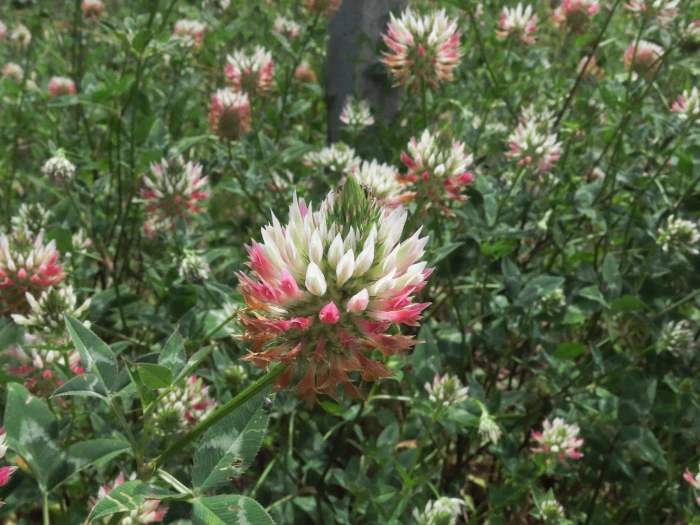Arrowleaf Clover
(Trifolium vesiculosum)
Arrowleaf Clover (Trifolium vesiculosum)
/
/

Emanuele Santarelli
CC BY-SA 4.0
Image By:
Emanuele Santarelli
Recorded By:
Copyright:
CC BY-SA 4.0
Copyright Notice:
Photo by: Emanuele Santarelli | License Type: CC BY-SA 4.0 | License URL: http://creativecommons.org/licenses/by-sa/4.0/ | Rights Holder: Emanuele Santarelli | Publisher: iNaturalist | Date Created: 2020-06-14T13:23:14-07:00 |






















Estimated Native Range
Climate Requirements for Eagan, Minnesota
| This Plant | Your Site | Plant Suitability for Your Location | ||
|---|---|---|---|---|
| • Precipitation | 7" - 91" | 30" | Your precipitation may be too high for this plant. | Too high |
| • High Temp. | 69°F - 97°F | 84°F | Your summer temperatures are normal for this plant. | Excellent |
| • Low Temp. | 14°F - 52°F | 3°F | Your winter temperatures may be too cold for this plant | Too cold |
This plant may not grow well at your location - your precipitation is too high.
Summary
Trifolium vesiculosum, commonly known as arrowleaf clover, is an annual herb that is native to a variety of habitats including grasslands, meadows, and open woodlands in southern and eastern Europe to the northern Caucasus. It has been introduced to the United States and Australia. This clover typically grows to a height of 1-2 feet (30-60 cm) and is recognized by its distinctive arrow-shaped leaves and pink to white flowers that bloom in the spring. The flowers are highly attractive to pollinators and can add a splash of color to the landscape.
Arrowleaf clover is valued for its nitrogen-fixing ability, which enriches the soil, making it a popular choice for cover cropping in agriculture. It is also used for forage due to its high nutritional value for livestock. In gardens, it can serve as a temporary ground cover or be incorporated into wildflower meadows. Arrowleaf clover prefers full sun to partial shade and thrives in well-drained soils. It is generally easy to maintain but may require reseeding as it is an annual plant. While it is not typically prone to diseases, it can be susceptible to root rot in poorly drained soils.CC BY-SA 4.0
Arrowleaf clover is valued for its nitrogen-fixing ability, which enriches the soil, making it a popular choice for cover cropping in agriculture. It is also used for forage due to its high nutritional value for livestock. In gardens, it can serve as a temporary ground cover or be incorporated into wildflower meadows. Arrowleaf clover prefers full sun to partial shade and thrives in well-drained soils. It is generally easy to maintain but may require reseeding as it is an annual plant. While it is not typically prone to diseases, it can be susceptible to root rot in poorly drained soils.CC BY-SA 4.0
Plant Description
- Plant Type: Herb
- Height: 1-1.1 feet
- Width: 3.25-4.25 feet
- Growth Rate: Rapid
- Flower Color: White
- Flowering Season: Spring
- Leaf Retention:
Growth Requirements
- Sun: Full Sun, Part Shade
- Water: Medium
- Drainage: Fast, Medium, Slow
Common Uses
Bee Garden, Bird Garden, Groundcover, Low Maintenance
Natural Habitat
native to a variety of habitats including grasslands, meadows, and open woodlands in southern and eastern Europe to the northern Caucasus
Other Names
Common Names: Crimson Clover, Suckling Clover
Scientific Names: Trifolium vesiculosum, Amoria vesiculosa, Mistyllus turgidus, Trifolium recurvum, Trifolium turgidum, Trifolium vesiculosum var. grisebachianum
GBIF Accepted Name: Trifolium vesiculosum